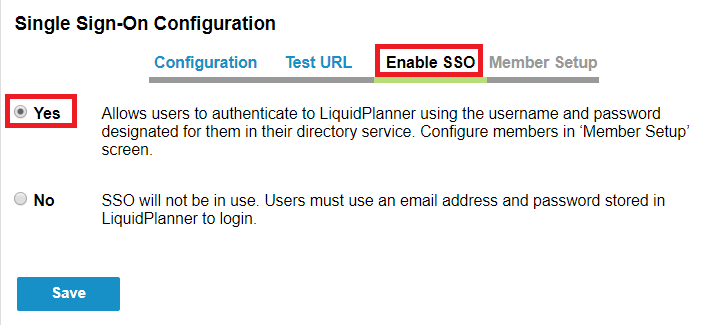Configuring SAML SSO for LiquidPlanner
These steps will guide you through setting up the single sign-on functionality between ADSelfService Plus and LiquidPlanner
Prerequisite
-
Log in to ADSelfService Plus as an administrator.
- Navigate to Configuration → Self-Service → Password Sync/Single Sign On → Add Application, and select LiquidPlanner from the applications displayed.
Note: You can also find LiquidPlanner application that you need from the search bar located in the left pane or the alphabet wise navigation option in the right pane.
-
Click IdP details in the top-right corner of the screen.
-
In the pop-up screen that appears, note down the values of Login URL, Logout URL and FingerPrint. We will need these values in a later step.

Note:
Instead of FingerPrint, you can also download the SSO certificate and use it for SSO configuration.
LiquidPlanner (Service Provider) configuration steps
-
Now, log in to your LiquidPlanner administrator account.
-
Click your User Profile picture at the top-right corner of the screen, and select Settings.
-
From the left-hand navigation, select Single Sign On Configuration.

- Select Configuration.
-
Choose a unique subdomain for custom login. This value will serve as the SP Identifier while configuring LiquidPlanner in ADSelfService Plus. Note down this value.
-
In the Fingerprint field, enter the Fingerprint value you had saved in Step 4 of Prerequisite.

-
In the Remote Login URL, enter the Login URL value you had saved in Step 4 of Prerequisite.
-
In the Logout Landing URL, enter the Logout URL value you had saved in Step 4 of Prerequisite.
-
Click Save.
-
After you configure your SSO settings, you must test them. Select Test URL to do this.
-
Once your test is successful, go to Enable SSO.

-
Change the radio button from No to Yes if you want to enable SSO for your workspace.
-
Click Save.
-
After setting up SSO, you need to configure your LiquidPlanner members’ behavior.
-
Determine if you would like the all workspace members to be using SSO at the same moment by selecting Yes for Enable SSO for All Members.
-
Determine if you would like all new workspace members automatically to be set up with SSO required by selecting Yes for Enable SSO for All New Members by Default.
- To move one member at a time, or a group of members, into SSO Enabled, select them from the SSO Disabled box and use the >> arrows to move them to SSO Enabled. Alternatively you can move everyone at once with the Move All => button.
-
Once done with selections, click Save.
ADSelfService Plus (Identity Provider) configuration steps
-
Now, switch to ADSelfService Plus’ LiquidPlanner configuration page.
-
Enter the Application Name and Description.
-
In the Assign Policies field, select the policies for which SSO need to be enabled.
Note:ADSelfService Plus allows you to create OU and group-based policies for your AD domains. To create a policy, go to Configuration → Self-Service → Policy Configuration → Add New Policy.
-
Select Enable Single Sign-On.
-
Enter the Domain Name of your LiquidPlanner account. For example, if you use johndoe@thinktodaytech.com to log in to LiquidPlanner, then thinktodaytech.com is the domain name.
-
In the Account ID field, enter the unique subdomain you saved in Step 5 of LiquidPlanner configuration.

-
Choose the Name ID format that has to be sent in the SAML response. The Name ID format will specify the type of value sent in the SAML response for user identity verification.
-
Click Add Application
Your users should now be able to sign in to LiquidPlanner through ADSelfService Plus.
Note:
For LiquidPlanner, both IdP-initiated and SP-initiated flows are supported.




